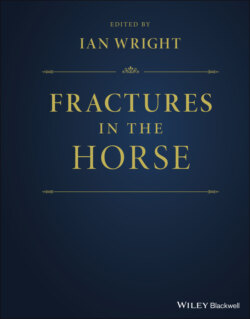Читать книгу Fractures in the Horse - Группа авторов - Страница 79
Measures of Fracture Incidence in Other Horses
ОглавлениеReports of fracture incidence rates in other breeds or non‐sports horses are few and far between. There is some work that describes differences in the type and configuration of carpal bone fractures in Thoroughbreds compared with Standardbreds (and Quarter Horses). However, this work is based on veterinary records of horses admitted to a particular referral hospital in the USA and does not provide any denominator data from which it may be possible to produce estimates of incidence [34]. A more recent study based on 356 Standardbred racehorses, providing 8961 horse months at risk, does provide some estimates of incidence risk for a number of different types of fracture [35]. The authors calculated that the most common fracture types in this population were those affecting the proximal sesamoid bones (0.32 per 100 horse months), followed by proximal phalangeal fractures (0.28 per 100 horse months) and both pelvic and Mc/Mt3 fractures (0.16 per 100 horse months). In comparison to Thoroughbreds in training, it appears that the incidence of pelvic fracture is similar; proximal sesamoid bone and proximal phalangeal fractures are more common in Standardbreds; and fractures of Mc/Mt3 are marginally more common in Thoroughbreds.
Away from sports horses, some work has focussed on the geriatric horse [36–38]. This indicates that lameness is a significant problem in the older horse, and is the primary reason for euthanasia. However, fractures are not of particular concern, and the authors suggest that this is, at least in part, due to changes in management and reduced exercise levels.
